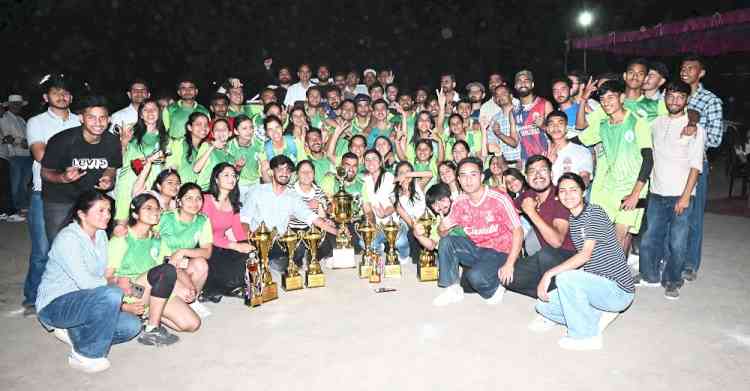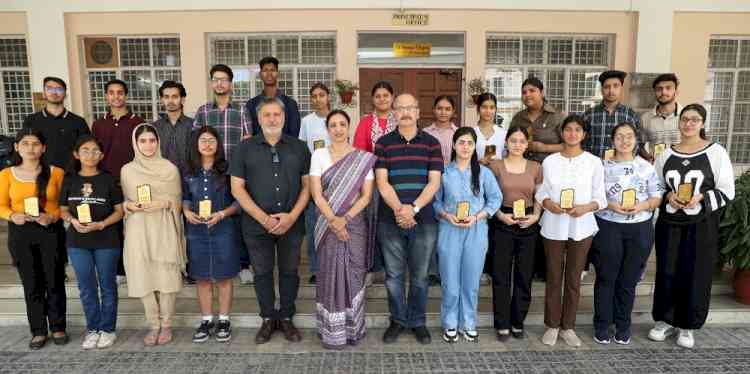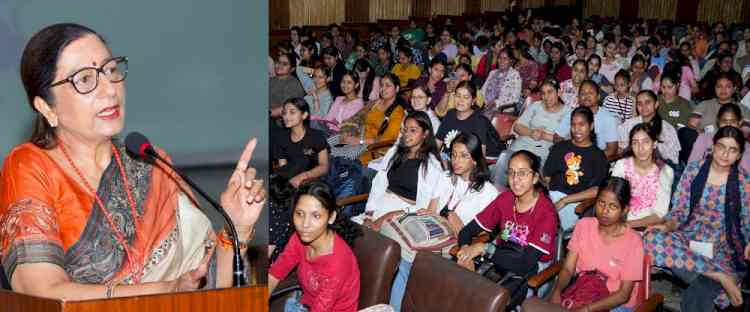Webinar by Systems Biology, PU
The overall session discussion benefitted the students and research scholars

Chandigarh: The Centre for Systems Biology and Bioinformatics, Panjab University, Chandigarh organized a webinar for Research Scholars and Students of MSc. Systems Biology and Bioinformatics entitled “Data Analytics in Life Science”.
The Speakers of the session . Dr. P.V Bharatam NIPER, Mohali and Dr. Prashant Survajhala from Birla Institute, presented the keynote address on “Introduction to Data Analytics in Life Science”. They discussed the basic concepts used in the technology relating with best suitable real life examples which are essential for the understanding of technology. They projected a clear understanding of the importance of the remarkable discoveries in the recent times in the biological field that have helped to develop tools and techniques to know 3D structure of DNA, RNA, Protein macromolecules and their related biological data.
Public genome resources such as 1000 Genomes Project (~2 500 human genomes), ExAC (~60 000 human exomes), and most recently HGDP (900+ rare human genomes) provide massive amounts of genetic data. This huge big data set is waiting to be analysed and to gain some knowledge to study the complex behaviour of mammalian cells as well as human disease.
Currently, life science Big data includes four levels of information content like GENOMICS, TRANSCRIPTOMICS, Proteomics and Interactomics. Three areas in Life Sciences where we do have Big life science data and therefore we could run Machine/Deep Learning models in these areas are , Single Cell Omics, Microscopy Imaging etc.
They discussed that it is important to understand this information. Biologists need accurate and fast methods to analyse, visualize this complex information which further helps to understand how our complex human biological systems work. Systems biology and data analytics fields are booming to develop mathematical models, computer programs to understand various aspects of human health and diseases. This involves big data processing its statistical analysis, network information, system modelling of diseases e.g., assembly of genome & its annotations, identification of differentially expressed genes and further protein-protein interactions.
The power of Genomics vs. Electronic Health Records (EHR) for predicting diseases. EHR represents quite trivial clinical information such as height, weight, body temperature, blood pressure etc. It turns out that this trivial information was more predictive than the genetic variation on the DNA level. This is a typical situation for common diseases such as T2D, schizophrenia, cardiovascular disease etc. which was sometimes referred to as the problem of the Missing Heritability and simply means that genomics Big Data cannot predict common diseases alone.
They projected that Genomics data make a lot of promises for Life Sciences, Precision Medicine and Health Care. However, at the same time reiterate that the current ways of analyzing Genomics suffer from the curse of dimensionality. This can be avoided via reconsidering what we define as features and samples in Genomics. Single Cell Omics and Microscopy Imaging are two other Big Data directions in Life Sciences which are ready for and should be analyzed by Machine/Deep Learning.
They emphasize successful applications of data analytics in life science.
Ø Precision Medicine greatly benefits from huge genomics efforts such as The Cancer Genome Atlas (TCGA) (11 000 human tumors across 33 different cancer types) and Biobank (~500 000 human individuals).
Ø Genomics data across human populations in order to take a random human DNA and predict whether this person is predisposed to certain diseases, so we should be able to predict the future of this individual and prescribe a treatment adjusted to this particular individual.
The Webinar was attended by 50 participants. The interactive session resolved the queries raised by the participants.
Dr. Ashok Kumar delivered a vote of thanks. The overall session discussion benefitted the Students and research scholars and this will help them to do the implementation of the same in their research work also.


 cityairnews
cityairnews 









